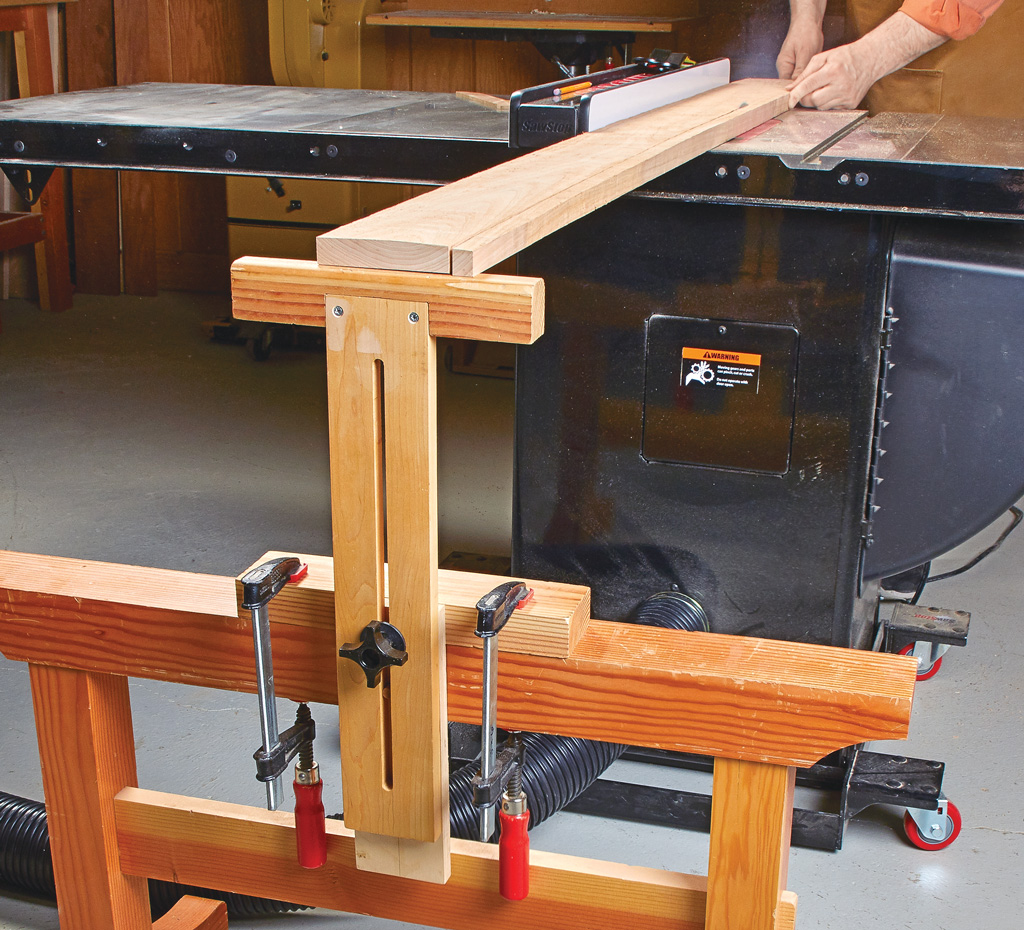Ripping stock on the table saw may seem like a pretty straightforward job. So it might be easy to forget about a serious hazard that you really want to avoid — kickback. But the good news is that it’s really easy to avoid this problem. All it takes to make rip cuts a lot safer and even more accurate is to get into the routine of always using a few, simple helpers. These easy-to-use accessories put you in better control and rip cuts will be much safer.

Installing a splitter on your table saw is probably the number one way to avoid the problem of kickback while ripping. And a shop-made splitter, like the one shown in the drawing can make this a real low-cost but high-value safety addition. It’s positioned behind and directly in line with the saw blade. As the board passes through the blade, the saw kerf slides onto the pointed splitter. What this does is eliminate the possibility of the kerf closing and pinching the back of the saw blade, with kickback being the possible result. And as a bonus, the action of the splitter will minimize burning and rough cuts.

I don’t think you can ever have too much control over the workpiece when making a rip cut. But since three hands aren’t an option, what I like to do is add an extra set of “fingers” to the saw with a lock-in featherboard. A featherboard takes over the responsibility of keeping the workpiece snug to the rip fence. With firm, continuous pressure the workpiece can’t wander away from the fence. And since the fingers of the featherboard only allow movement in one direction, the chance of the stock being kicked back is reduced. To do its job well, the featherboard should apply pressure in the right spot and provide the right amount of “push.” To avoid pinching the saw kerf closed, you want to position the featherboard just in front of the blade. And then adjust the tension so that it doesn’t take too much effort to push the workpiece past the blade.

When ripping stock on the table saw, a good push block isn’t optional, it’s a must. And the simple 2x4 scrap push block shown in the drawing above is my top choice. Why? This push blocks helps you maintain solid control and avoid any chance of kickback by doing three things. First, the thick “heel” of the block provides a solid, steady push. And then along with a forward push, this design also lets you apply the right amount of downward force needed to keep the workpiece flat on the saw table. And maybe best of all, as you can see in the drawing above, this push block can ride right over the saw blade. This means you always have full control of both pieces and the job is made much safer.












